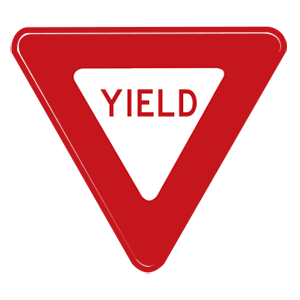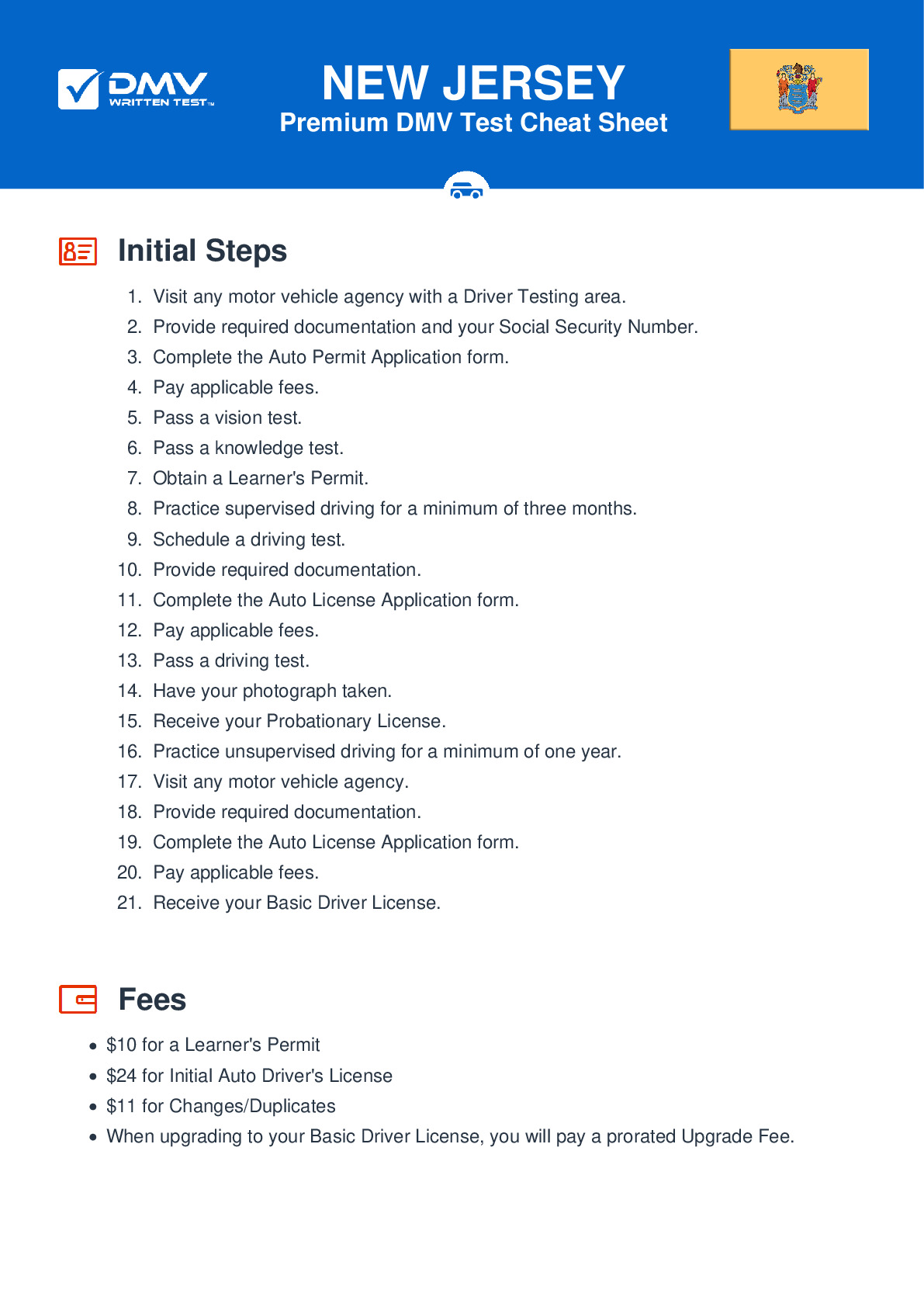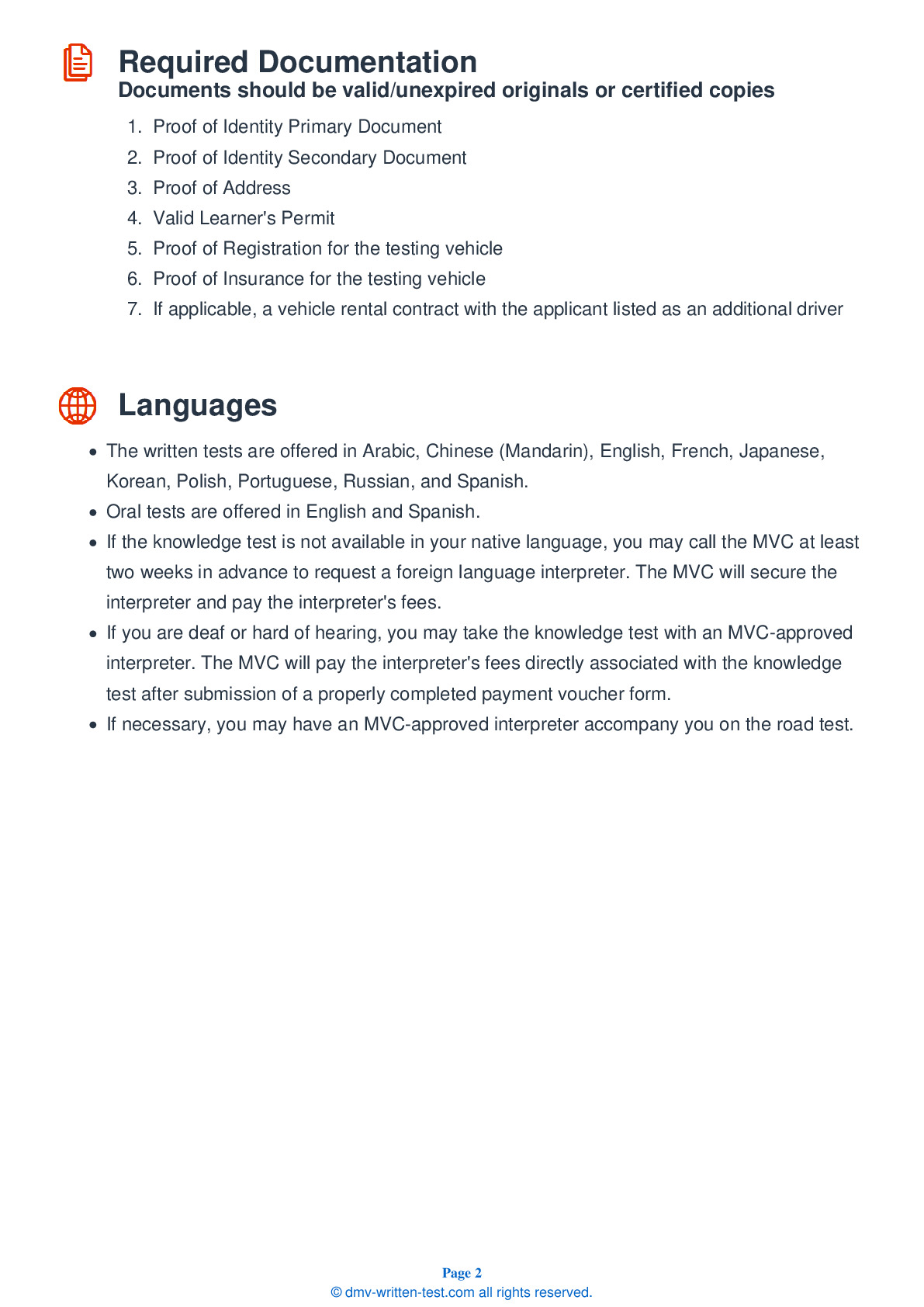2025 New Jersey Permit Test 13
The following questions are from real DMV written tests. These are some of the actual permit questions you will face in New Jersey. Each permit practice test question has three answer choices. Select one answer for each question and select "grade this section." You can find this button at the bottom of the drivers license quiz. For a complete list of questions and answers for New Jersey please visit https://cheat-sheets.dmv-written-test.com/en/new-jersey/car.
Number of Tests
Number of Question
Passing Score
43. As you drive, you're required to stop your vehicle:
Explanation
Situations where motorists are required to stop include approaching intersections with stop signs, approaching intersections where a red light is either flashing or illuminated, or any time when a traffic officer orders your vehicle to stop.
44. When a stop is required at an intersection and no markings appear to indicate a stop line or crosswalk, a driver:
Explanation
If there is no stop line or crosswalk, you should stop at the point nearest to the intersecting roadway where you can get a view of approaching traffic. You should not enter the intersecting roadway to gain a better view.
45. You may cross solid yellow lines:
Explanation
As a general rule, broken traffic lines may be crossed but solid lines may not. Solid yellow lines may be crossed only when the driver is making a turn.
46. This sign means:

Explanation
Traffic signs with three sides of equal length warn drivers to slow down when approaching an intersection and to be prepared to come to a complete stop to yield to other drivers or pedestrians. Drivers may proceed when it is safe to do so.
47. You notice that the driver in the vehicle ahead of you is driving with one hand and talking to a passenger. You should:
Explanation
Do not become distracted by looking at passengers, attempting to find something in your vehicle, looking at reading material, sightseeing, or daydreaming while driving. If a driver near you seems distracted, allow them extra space because the risk of an accident is increased by their inattentiveness.
48. If worried, nervous, angry, or crying, a driver:
Explanation
You may not be able to drive well if you are worried, excited, crying, angry, or depressed. Emotions can distract you from your driving because your mind is focused on something else. Take time to calm down and get focused before driving.
49. Hydroplaning is usually caused by:
Explanation
Your tires become less effective at clearing water from the road as you increase your speed. If you drive too fast, they may lose their grip entirely, leaving the vehicle sliding on a film of water. This is known as "hydroplaning."
50. Defensive driving is:
Explanation




